DIY corner cabinet

In an effort to save money, many people try to assemble furniture with their own hands. It also allows you to realize your plan, not depending on anyone, and in addition, raises self-esteem, like any possession of a useful skill. There are certain rules for how corner cabinets are created.
Step-by-step instruction
Making furniture (the same corner cabinet) is not so difficult, you just need to know some key points and be able to use the drawings.
Before drawing, you need to decide on the geometric shape of the future product:
- trapezoid;
- the letter G;
- triangle.
There is another option - with five walls.




We decided to do it ourselves, which means that you need to think over all the dimensions, which wall, shelf or box will take how long.
Take, for example, the following values: length and width 90 cm each, height 250 cm. According to the assembly scheme, they calculate how much material will be needed and for what purpose.
You cannot make a homemade cabinet without the following materials:
- self-tapping screws;
- glue;
- rollers;
- fittings;
- profile;
- mirrors (optional).
The desire to save money is understandable by working with your own hands, rather than ordering a wardrobe, but there are moments where it is undesirable to save money. A big mistake is made by those who order bad rollers or refuse the steel profile due to its perceived high cost.

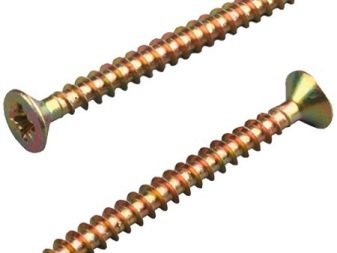



Be sure to prepare the workplace, the corner cabinet can be assembled properly only in this case.
Tools Required:
- drill;
- building level;
- puncher;
- hand saw;
- hammer.
If you want to speed up the work and do it neatly, order the cutting of the boards in a professional workshop.

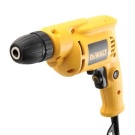




The size of the product should correspond to the area of the room where the future cabinet will stand. The basic principles are also taken into account. So, it makes no sense to set aside a compartment for outerwear already 80 centimeters and below 140 cm.This is where the diagram comes in handy, having drawn up and using it, you will not miss the size, you will not find that there is not enough space inside for everything you need. The appearance of the cabinet has very little effect on its assembly.
The first step is to attach the steel corners., which will hold the sidewalls of the structure, will not allow it to deviate from the floor and ceiling. The finished parts are used to make the frame, the rollers are attached to the door, the guides are installed and the doors are taken care of. At this last step, they certainly control all actions with a level in order to eliminate the slightest distortions.






The inner workings are just as important as the formation of the shell.
The steps are as follows:
- put brackets;
- fix the shelves in their proper places;
- mount the fittings (first of all, partitions, then shelves and hangers, mirrors, and leave the handles for later).
Be sure to select fasteners in accordance with the material of the base (for brick and concrete a dowel-nail, for wood - a nail or a self-tapping screw, special dowels with expansion whiskers and a transverse notch must be screwed into aerated concrete). The vertical posts, inserting them into the guides, should be fixed with hangers. Stiffening ribs cannot be neglected, you need to try to make them as large as possible - primarily in places where a box or shelf will stand. Replacing a metal profile with slats is permissible in exceptional cases, and the wood must be completely dry, otherwise shrinkage will deform the entire cabinet.


Without any special changes, this scheme is also applied when assembling drywall cabinets, but there are still certain differences.
The starting point in this case is not the installation of the frame, but the marking of the floor and ceiling in accordance with the scheme. It is most practical to mark it with a rubber shock-absorbing tape, and only along it, it is already possible to attach metal profiles as accurately as possible. To make the cabinet structure last longer, be sure to use stiffeners by inserting them between the rack profiles.
If you do not want to face a situation where something needs to be redone, perform the next step especially carefully. The workpieces must be placed at the points allotted to them and attached to the self-tapping screws (screwing them at a distance of 20 cm or so). Make sure that the hats enter the material by a millimeter, and wherever you will then attach the shelves, corners are installed.


In no case do it yourself or order doors for a homemade cabinet somewhere until the rest of the structure is assembled! Otherwise, you may be faced with the fact that the dimensions have changed somewhat, and it is impossible to finish the job. After the doors, there is a turn of rods and (if any) lamps.
Then it only remains to take care of decorating it (priming the internal and external surfaces, sealing the joints with gypsum plaster, gluing the serpentine tape, installing painting corners, filling, drying, sanding and re-filling, priming and finishing). What exactly to finish - with tiles, other material, or simply paint, you need to decide on your own.

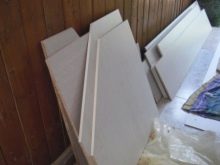

Design features
Complaints about the lack of space in an apartment or house are very common; on closer acquaintance with the dwelling, it turns out all too often that some corners are empty, it is impossible to use them in any way. Both problems can be solved at the same time if you make a corner cabinet - it is also much more economical than buying it in a store or ordering it from a furniture company.
Almost everyone can draw up a drawing, but professionals should cut out the details in accordance with the idea, since it is too difficult and troublesome. The height of the section where fur coats, jackets and coats are to be stored should flexibly adapt to the height of those who are to use the wardrobe, everyone should freely reach the crossbar. An important clarification: by placing the deadbolt across the width, you will achieve a greater impact on the interior space.


A carefully thought-out scheme helps to finally navigate in size, it is better to pay attention to it than to risk in vain.
It is advisable to draw up a diagram, being exactly where the cabinet will have to stand - then do not lose sight of any details. Even the smallest components should be reflected in the drawing. Mark the location of roll-out boxes, doors and baskets; the thickness of the material is indicated accurately and the specification of any item is given. Yes, it’s quite difficult - but there’s no other way to get the job done well. The installation locations of the luminaires (if any) should be noted immediately, both when drawing up the plan, and at the beginning of the work itself.

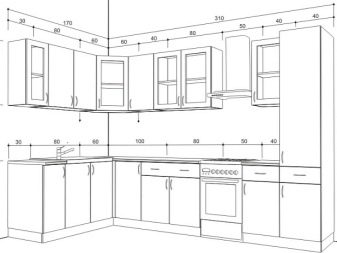
Styles and placement options
In the bedrooms with traditional interior furniture made of MDF or fiberboard, covered with a film, a plastic layer or veneer, looks perfect. With the help of a mirror sheet, it is not only possible to expand the room, but also to correct some visual problems. Many designers like to use reinforced glass, allowing them to show their imagination and realize the most daring projects.
Country style helps to feel light and at ease, relieve the burden of ever-haunting problems. It is simple to comply with it - give up catchy colors and designs, the less processed the tree looks, the more closely the compliance with the style canon.
As for the place of installation, most experts consider the place where the walls touch each other is the best solution. If you wish, you can completely cover one of the walls, and leave the other free of furniture.


One of the accommodation options is kitchen, where the cabinet is placed for culinary needs. The arrangement of cabinets in any room has its own characteristics, but even against this background, the kitchen stands out. There is always not enough space, and therefore any way to increase the efficiency of the use of space at least a little is beneficial. Please note that it makes sense to measure surfaces and order blanks only when the floor, walls and ceiling are leveled - otherwise the cabinet may not fit in the given place.
To correctly design a corner kitchen cabinet, you need to use only two types of connections (at a right angle it should be connected to the countertop, and at an angle of 45 degrees to the sink). Unlike the direct version, additional inserts should be provided (they perform two functions at once - mechanical connection of boxes and replacement of a part of the facade). A ledge is made above and below.
It is impossible to correctly calculate the structure and estimate the consumption of materials for it, unless you take into account that the upper and lower elements are located in the gap dividing the side lobes, otherwise it will not be possible to design the facade properly. The table top necessarily has an identical geometric shape.

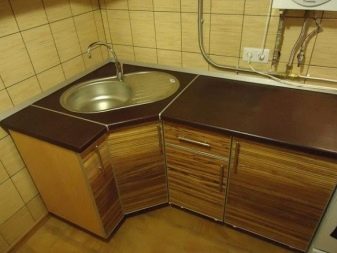
Models
It is very important to draw a good diagram, choose a decent material and tool, connect all the parts as expected. But even before these works, you should decide what exactly you want, because the closet is the closet.
There are three main options:
- the simplest (for a pantry or other utility room);
- a full-fledged product (such as a wardrobe or linen option);
- exquisite top-class furniture.
In the absence of sufficient experience and confidence in success, it is worth working only with the first type of corner cabinets - even if the result is not impressive, but practice, and do not expose the errors immediately to public display. Remember that you can save money only when there is already a prepared niche or a solid and very flat floor, otherwise leveling it will require too much effort and money.
Do not try to either excessively reduce or increase the size of drawers and shelves - this will equally make them impractical, inconvenient to use. When creating a model, you need to take care not only that the facade is beautiful, but the frame is strong. A very important point is the presence of mezzanines, thanks to which a certain amount of used space is added. A wall cabinet is no more difficult to make than usual, you just have to be careful not to make mistakes.


Dimensions (edit)
The cabinet, which has to stand in the inner corner (except for the single one), begins to design and assemble from the corner section, and only after it comes the turn of the wings and the side rack. Two 80x80 sections (one for outerwear) is the very minimum, without which there is nothing to talk about at all.
The optimal height is to the ceiling or slightly lower. For a diagonal cabinet with a triangular section, the sum of the lengths of the sides of a right angle cannot be less than 120 cm; if you have to make one of the walls noticeably longer than the other, it is advisable to prefer the shape of a trapezoid. The depth should be at least 40 cm, and 0.45 and 0.6 meters are considered typical values.


Necessary materials
The main three types of raw materials are as follows:
- laminated chipboard;
- furniture board;
- boards.
Wood is not as strong as particle board, and when calculating the consumption it must be borne in mind that it will take 50% more thickness to achieve the same strength. All chipboard parts must be covered with melamine, and in principle, this can be done at home, but not always cost-effectively.
The option when using drywall is very difficult. The hinges are not able to stay in the profile, you will need to make a special wooden frame on top of the facade, otherwise the door will simply "lead". And the profiles themselves must be special, it is not so easy to find them even in a large hardware store. A big disadvantage will be the fact that such a cabinet is unacceptable to move. Taking wood from a regular cabinet is not a good idea.
The tree needs to be thoroughly prepared and carefully selected, but if you want to get furniture over the weekend that will serve until the next major overhaul, there are no alternatives - there is only laminated chipboard on confirmations.



And one more nuance: it is quite possible to make a good modern wardrobe out of an old wardrobe - but you will need to use new fittings. Runners, rollers, handles and doors, even if they still look normal, are almost certainly outdated. It is imperative to check for any sagging in the door panels. Sawing off parts of parts is undesirable, and whenever possible, a material extension should be preferred to it.
As you can see, there is nothing extremely difficult in creating a corner cabinet with your own hands. You just need to do all the work carefully and without deviating from the planned stages. Then you will save money and be able to enjoy the achieved result for several years.
For information on how to assemble a corner cabinet with your own hands, see the next video.













The comment was sent successfully.